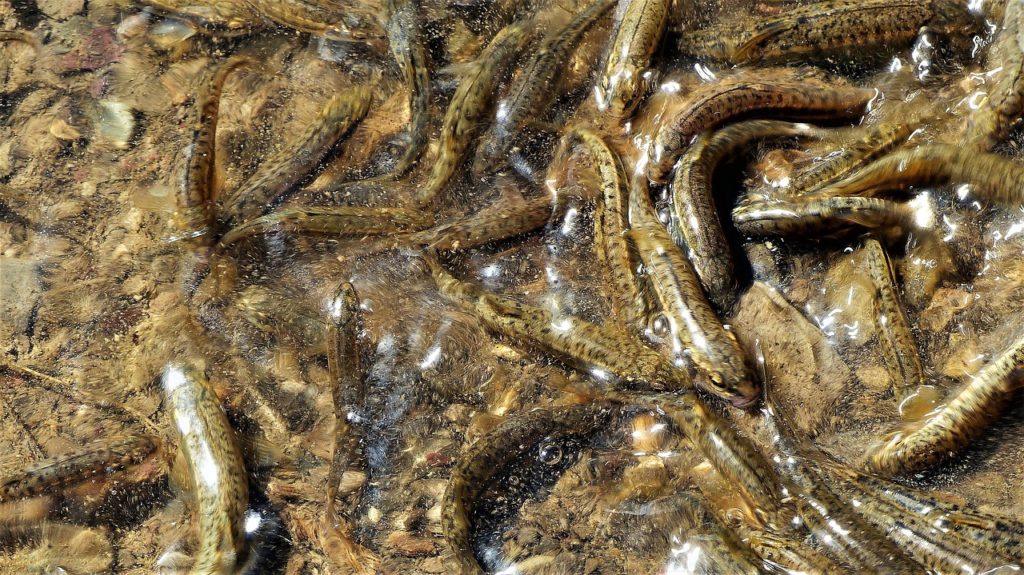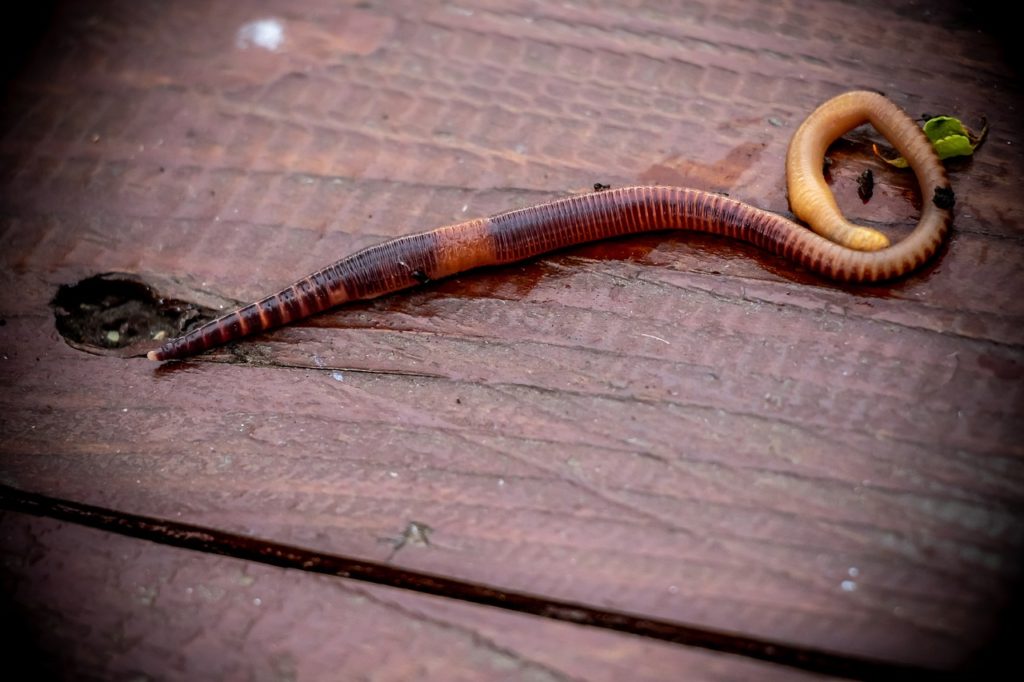Last Updated on May 16, 2023 by Lisa Vargas
When you need calories and you need fat, it doesn’t get much better than fish. There are lots of animals in the wild that can feed you, but many of them have little fat.
Rabbits and squirrels are abundant in most environments, but they have almost zero fat. You can actually die of something called “rabbit starvation” in which you eat just the meat of the rabbit and get plenty of calories but no fat.

Pioneers found they needed to eat the guts, brains, and even grind up the bones to get extra nutrients. Fat is really needed to keep you going in a survival scenario. While trapping small game allows you to set a trap line and then check it once or twice a day, fish traps allow you to do the same thing.
Some people would argue that your odds of getting a meal are actually better with fish traps. In this article, we are going to cover several different types of traps and how you can set them.
As is with any type of trapping, it is a numbers game. The more traps you set, the better your odds are of catching something.
You will want to start out with a few and then add to your trap line every day. Once you are happy with your line, be sure to check it once or twice a day to avoid predators stealing your catch.
How To Build A Fish Trap

Types Of Fish Traps
There are several different types of fish traps you can use or you can build. They all follow one simple principle. If you create a funnel at the opening to a fish trap, the fish will swim in but will not be able to figure out how to swim back out.
No matter if you are buying a fish trap, building with rocks, or working with a plastic bottle, the same principle applies. In this article I am going to stick to the most common fish traps and the ones that are easiest to build.
You can buy framed mesh fish traps and then just bait them and set them. You can build bottle traps with the clear plastic bottles we find all along water sources.
You can build V-traps using natural materials. Finally, you can build basket traps with wire or natural materials. We will now go over each type and how to use them.
Bottle Traps
I am going to start with bottle traps as they are one of the easiest and most effective traps to build. It is sad to see it, but you can almost always find large plastic bottles washed up on the shore of every lake, river, and ocean.
As frustrating as it is that the beauty of our planet is being ruined by this litter, it gives us materials for building good fish traps.
How do you make a fish trap with a 2 Liter Bottle?
Start with a few 2 Liter bottles that are clear. Green bottles do not work nearly as well. Remove the labels as best you can and get some vines or cordage.
Start by cutting the tapered portion of the bottle off just below the taper. Next, cut off the top section of the taper where you would normally attach the lid.
On the tapered section remaining, cut the smaller end down about three inches as many times as you can leaving lots of little plastic strips about ¼ to ½ inch thick.
Then, invert the tapered end and insert it back into the base. You may need to cut off more plastic so that a fish can swim in the end but not swim back out. If you have cordage, cut a few holes around the top in both pieces of plastic so you can run cordage through the holes and tie it off.
Drop a few stones in the bottom to weigh it down, bait the trap, and set it somewhere in the water where the current will not wash it away. Now do the same with as many other 2 Liter bottles as you can and get them all set.
Find some way to mark the locations so you can find them easily when checking your traps.
How Do You Make A Wire Funnel?
You have probably seen basket traps being made if you regularly watch wilderness survival shows. They are time consuming to make but can be just as effective as a bottle trap. You will need thick wire, long flexible sticks, or vines for this.
Let’s start by making a fish trap with sticks. Gather a big bundle of flexible sticks about four feet long and another bundle about 1.5 feet long. The idea is to make two funnels and then attach them.
Start with the longer sticks. You should first form a circle about two feet in diameter with a longer stick and tie it off. This si the start of your frame.
Start working your way around the circle and use cordage or vines to attach the long sticks to the circle frame with just a few inches hanging off the end.
Once you have sticks attached all around the circle frame, use cordage or vines to weave the ends of all the sticks together at the other end.
You now have constructed the large cone. You can use more vines or cordage around the middle if you feel they are needed to hold it together.
Now you are going to do the exact thing same with the shorter sticks. Form a circle frame and start attaching them with a couple inches hanging off the end.
The difference is that with this cone you should make a second circle frame smaller than the first and attach the sticks to the circle right in the middle. This will leave about a foot hanging off of the other end.
Position the second circle frame so there is a small opening at the opposite end of the larger circle frame. Now, insert the small cone inside the larger cone and lash the two together.
Add some rocks in the bottom to weigh it down, bait it, and set it out. Again, the more you set the better.
If you want to make a wire funnel, it can be less time consuming than starting with natural materials. The principle is exactly the same as using sticks.
To keep it simple, I would suggest cutting four foot and two foot sections of wire to build it the same way as we discussed above. You have the option of using one continuous piece of wire to weave your trap, but this tends to take more practice.
However, one piece of wire is always going to hold together better than attaching a bunch of separate pieces.
With both building materials just be sure the fish can swim in the opening but cannot get back out.
How To Make A Fish trap with sticks or rocks
One of the easiest traps to build is a V-Trap or primitive fish trap. For this to work, you will need some shallow water. I like using inlets and pools along the shore that are less than two feet deep.
You can use rocks to build this trap or you can drive stakes into the ground. Whether stacking stones or driving stakes, you will want the gaps to be relatively small based on the size of the target fish with water flowing through.
Simply start at the shore and place stones or sticks in a line that points back towards the shore in the center. Do this coming in from both sides with the cleft of the ‘V’ pointing back towards the shore.
Leave a small gap in the cleft of the ‘V’ just large enough for fish to swim through. Go back over the two walls that you have built and fill in any gaps you see where fish could get out.
Also, be sure that the tops of the stake walls or rock walls are up above the surface of the water. Finally, bait your trap and go build another one.
The fish will swim in and will not be able to find their way back out.
What Is The Best Bait For A Fish Trap?

The key to fish traps is bait. You can potentially catch fish without bait, but it doesn’t happen very often. Unlike with traps for small game, there is no good way to tell where fish have been and where they will be later.
You must draw them in. So what is the best bait for a fish trap? This is going to sound weird, but the best bait for any given fish is what their buddies have been eating lately.
What I mean is that you need to cut open the stomach when you catch your first fish. That will tell you what kinds of insects you can catch for the most effective bait.
That being said, anything edible can potentially be good fish bait. Fish are voracious predators and will go after all kinds of things.
I have used insects, minnows, crayfish, shrimp, small frogs, worms, fish guts, guts from small game, dog food, jerky, oats, cheese, hot dog pieces, corn kernels, and plenty of others.
If you know there are fish in the area and they are not going after your bait, try something different. Trapping fish is very much a process of trial and error just like any kind of trapping.
As we mentioned in our overview, trapping of any kind takes lots of practice. I suggest you get out as often as you can and try setting some traps. What I like to do is to find a good fishing spot and set some traps before I start actively fishing with my rod and reel.
If you set out four or five baited traps in your general area, all of those traps will be increasing your odds of success while you cast out your line. If you plan to leave your trap for any period of time, be sure you check it at least once a day.
If you are no longer using the trap, knock it down so it does not accidentally trap any fish.
Final Thoughts On Making Fish Traps
Every time you practice setting these traps, you will become more efficient. When you are desperate for that next meal in a survival scenario, these skills will help you make it happen.
